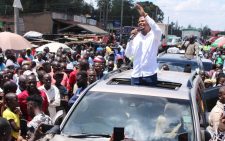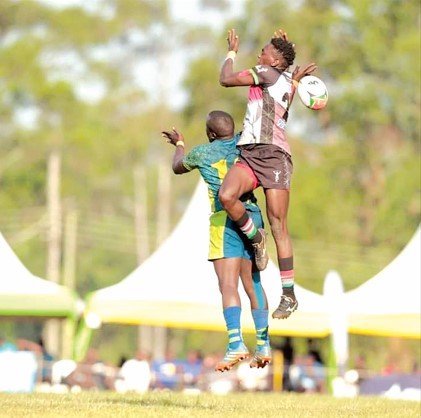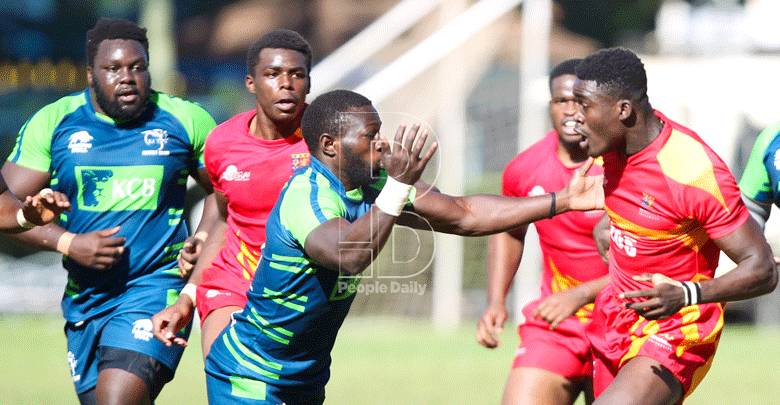Mt Kenya East battleground: Why the 2027 presidential race could be won or lost in Meru

As the 2027 general election approaches, Meru and the broader Mount Kenya East region are quickly emerging as a political powder keg that could determine the outcome of the next presidential race.
While traditionally overshadowed by Mt Kenya West in the national discourse, Meru, Embu, and Tharaka Nithi now find themselves at the epicentre of Kenya’s unfolding political drama.
The flurry of political activity in Meru in recent weeks – most notably the opposition tours led by former Deputy President Rigathi Gachagua – is a signal that the region’s influence in the 2027 polls is being recognized early and aggressively contested. But why is the region suddenly so pivotal?
To understand the stakes, one must first appreciate the unique political composition of Mt Kenya East. The region comprises Meru, Embu, and Tharaka Nithi counties — historically consistent with the broader GEMA voting pattern, yet culturally and politically distinct from their counterparts in Mt Kenya West (Kiambu, Nyeri, Murang’a, and Kirinyaga). This dynamic, once considered inconsequential due to unity under the ‘House of Mumbi’ narrative, is now increasingly under strain.
In the 2022 general election, President William Ruto’s United Democratic Alliance (UDA) rode a powerful wave of anti-establishment sentiment across Mt Kenya. He received overwhelming support across the mountain, with Meru County giving him 403,496 votes (roughly 86 per cent of total votes cast in the county), Tharaka Nithi offering 147,688 votes (91 per cent of total votes cast in the region), and Embu delivering 159,804 votes (89 per cent of total votes cast in the county).
These numbers, sourced from the official IEBC results, reflect a deep trust that Mt Kenya East placed in Ruto’s hustler narrative.
However, that trust is now under pressure.
Since ascending to power, there has been growing discontent in Mt Kenya East over perceived marginalization. Key government appointments, especially in powerful ministries and parastatals, have largely gone to figures from Mt Kenya West. While Deputy President Kithure Kindiki—a Tharaka Nithi native—was appointed to a high-profile role, many in the region see his position as an exception rather than the rule.
Furthermore, Kindiki has largely maintained a technocratic profile and is now involving himself in overt political pronouncements, even as his native region simmers with anxiety over unfulfilled promises.

Gachagua’s high-stakes gamble
Kindiki’s ‘silence’ has become politically costly. His absence and lack of political mobilization have created a vacuum that opposition figures like Gachagua are eagerly filling. The former DP has not only sought to assert dominance in Mt Kenya West but is now reaching into Mt Kenya East, presenting himself as the unifying figure for the entire mountain. But therein lies the catch: Gachagua’s ambitions could split the unity he seeks to consolidate.
The Gachagua-Kindiki rivalry, while largely understated, is becoming increasingly pronounced. Gachagua has styled himself as the de facto kingpin of Mt Kenya following Ruto’s rise, a role that doesn’t sit well with many in Mt Kenya East luminaries who view him as too parochial and focused on Central Kenya interests. Kindiki, seen as more cerebral and reserved, still commands respect in the East, particularly among professionals and youth, but his political reluctance may cost him influence when it matters most.
The tension is amplified by the long-standing chemistry and sometimes friction between Mt Kenya West and East. For decades, the region has voted as a bloc, driven by shared interests and ethnic affinity. However, cracks are now forming in that unity.
Mt Kenya East leaders are quietly voicing their displeasure at playing second fiddle in political negotiations and government appointments. If Gachagua’s attempts to dominate are perceived as dismissive of the East’s aspirations, the region could chart its own path, potentially swinging votes away from Ruto’s camp in 2027.
The numbers make this threat real. Meru, Embu, and Tharaka Nithi combined boast over 2 million registered voters. In a close presidential contest, even a 10-15 per cent shift in Mt Kenya East could prove decisive. If Ruto’s support in Meru drops from 86 per cent to, say, 65 per cent, the implications would be significant. That’s hundreds of thousands of votes that could drift toward a revitalized opposition — or simply abstain altogether. And that’s before accounting for possible disillusionment among the youth, who have increasingly leaned into protest politics and online activism against political betrayal.
To put this into greater perspective, remember the margin that separated Raila Odinga and Ruto in the last contest.

Mwangaza factor
Moreover, the re-entry of seasoned political actors like former Meru Governor Kiraitu Murungi has added another layer to the region’s fluid dynamics. Kiraitu recently criticized the government’s lopsided development focus, warning that Meru had become a political accessory rather than a stakeholder. His voice, coupled with that of other emerging leaders, could rally Meru into a swing-vote status — for the first time in recent memory.
At the centre of this storm is former Meru Governor Kawira Mwangaza. Though elected as an independent and thus less tethered to national party machinery, her voice carries weight among Meru’s grassroots.
So far, she has walked a tightrope, calling for development and unity while avoiding open confrontation with the State House. But 2027 may force her hand, and the side she chooses could influence the broader Mt Kenya East realignment.
In the end, the Meru battleground is not just about Gachagua versus Ruto or Kindiki versus silence — it is about the future of Mt Kenya East as an autonomous political entity. If the region breaks from its traditional bloc voting patterns, it will not only reshape 2027 but also rewrite the story of power brokerage in Kenya.
For Ruto, the challenge is not just maintaining numbers — it’s about managing perceptions, distributing power equitably, and quelling internal rebellion before it fractures a once solid base. For the opposition, the opportunity lies in the cracks forming beneath that base — and Meru and Embu may just be where the dam breaks.












